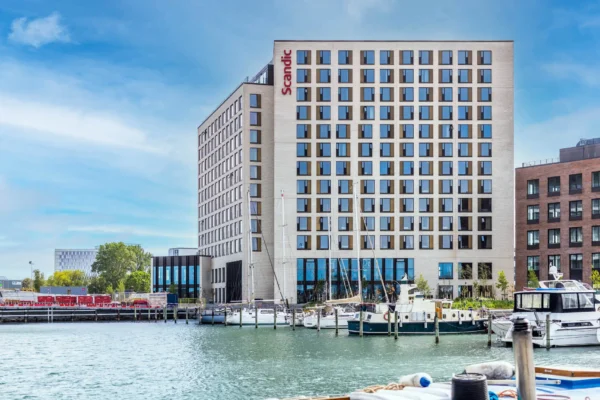Australia immigration process has emerged as an opportunity for individuals to start anew in one of the welcoming countries in the world. People across the globe see Australia as a destination that offers an advanced standard of living in a stable economy. The country continues to appeal to skilled professionals, students, and families from all over the world.
Even though there are various routes available in the form of different visa types, requirements, and pathways to make the process smoother, it might feel overwhelming at first. There is a suitable option for immigrants, depending on your situation, goals, and qualifications. Taking the time to explore and plan carefully makes a huge difference. If your dream is to either relocate to Sydney, study in Melbourne, or work in Perth, the first step to building a new chapter in your life in Australia is to understand the immigration process.
Entry Requirements
An Australian visa is a document that grants you entry to Australia for a specific period. Australia doesn't put visa stamps or labels on your passport like most nations do. Instead, your visa rights are electronically documented on an internet database, which the immigration officer will consult when you arrive in Australia to determine if you are granted a visa.
Everyone else must apply for a visa or permit before entering Australia, except New Zealanders, who can obtain one upon arrival. Depending on your country, you may be eligible for a visiting visa, an Electronic Travel Authority (ETA), or an eVisitor for brief visits. However, the Department of Home Affairs states that everyone other than New Zealanders must obtain the appropriate visa for long-term goals like employment or education.
Types of Visas for Australia Immigration
The categories of Australian immigration visas are as follows:
1. Australia Work Visas
The work migration program in Australia has been divided into the following categories by the government:
- Regional Migration.
- Short Stay Work Visas.
- Visas for Innovation.
- Temporary Work Visas.
- Permanent Work Visas.
If you wish to immigrate to Australia for work, you can apply for any form of work visa under the migration program, as long as you match the qualifying requirements. Most work visas have an age restriction. Eligibility for a work visa typically requires being under 45 or 50. Certain work visas, however, do not have an age restriction; the specifics of your application will determine this. Here are the most popular work visa options:
Global Talent Visa (Subclass 858): Depending on your skill set, there are two options for a skilled and business migrants. To apply for the streamlined road, you must submit an expression of interest. With a global talent visa, you can remain in Australia for as long as possible.
Skilled Employer-Sponsored Regional Visa ( Subclass 494): When your sponsoring employer nominates you for a 494 visa, you will be permitted to work in specific fields. This skilled occupation visa is temporary and valid for five years. After three years, if you are eligible, you can apply for permanent residency.
Skilled Work Regional Visa (Subclass 491): Only highly qualified and competent individuals are granted a 491 visa. You must submit an expression of interest and fulfill the points requirements for a visa 491. These documents are needed for the immigration application. You can apply for Australian permanent residency after three years with a 491 visa.
Temporary Graduate Visa (Subclass 485): Your occupation will determine which of the two streams you can select for a 485 visa. Your occupation must be on the list of skills occupations, for instance, if you wish to apply for the graduate work stream. Regardless of the stream you select, the temporary validity of the visa 485 is limited to two to four years. It is necessary to apply for another work visa to obtain a permanent visa.
2. Australia Family Visas
There’s a family relationship visa for anyone considering Australia immigration program. Permanent residents, Australian citizens, and citizens of New Zealand who meet the requirements can bring their family members to Australia with a family and relative visa. You can often get your siblings, children, or a close relative who satisfies the qualifying requirements with a family and relative visa. Consider applying for a parent or partner visa to bring your parents or significant other. Here are the different types of family visas:
Australia Aged Dependent Relative Visa (Subclass 114, 838): This visa is intended for older family members of Permanent residents, Australian citizens, or qualifying citizens of New Zealand. You must be of pension age and dependent on a relative to be granted this visa. Sadly, there could be a 50-year waiting period for this visa.
Australia Adoption Visa (Subclass 102): If you wish to adopt and bring to Australia a child under the age of 18, you can do so with an adoption visa. This visa requires you to apply on behalf of the child you wish to adopt and to be in the country at the time of adoption.
Australia Child Visa (Subclass 101, 802): Children who wish to join their Australian parent or legal caregiver are eligible for this visa. Although you may occasionally apply on your child's behalf, each child you have must submit a separate application.
Australia Carer Visa (Subclass 836, 116): If you have a family member in Australia who needs your help or medical attention, you can apply for a carer visa. Your sponsor must give you a medical certificate attesting to your actual physical condition that necessitates your care for you to obtain this visa.
3. Australia Student Visa
International students who wish to study in Australia can apply for a student visa under class 500. Education and training is only possible with this visa. To be eligible for an Australian subclass 500 visa, applicants need to adhere to the Immigration Office's rules. To study in Australia, a student must fulfill the standards set by the Australian government for moral character.
Additionally, they must submit a written declaration outlining their plan to study temporarily in the country. They should also have the right immigration form. The criteria for a genuine temporary entrant are crucial since they demonstrate to the Immigration Office that you have no intention of staying beyond the time limit once your visa expires.
4. Australia Retirement Visa
You can also choose to relocate to Australia via a retirement pathway. This Australia immigration path is more difficult than others, though, because you need to have previously obtained another visa, such as an investment retirement visa (subclass 405) or a retirement visa (subclass 410). Additionally, you are only eligible to apply for these visas if you have already obtained a temporary or permanent visa. Other similar visas include the refugee and humanitarian visas and the national innovation visa.
Documents Required for Australia Visa Application
The following documents are generally required for your Australia immigration processing:
- Valid passport.
- Visa application form.
- Identity photograph.
- Proof of paid visa fee.
- Police certificate.
- Proof of financial means.
- Sponsor letter (if applicable).
- Health insurance.
- Evidence of a temporary stay
- Authorized recipient form.
- Proof of accommodation.
- Invitation letter.
- Employer permission letter.
- Evidence of the study program.
- Parental consent.
- Civil documents with supporting evidence.
- Character requirements.
- Australian values statement.
- Evidence of a relationship.
- Proof of military service (if applicable)
- Birth certificate.
How to Apply for Australian Visas
Applying for a visa to Australia requires online services. You need to open an account and use the Australian visa processing website. In some (rare) situations, you may be able to apply on paper, but this is dependent on your visa type and the location from which you are using. Here's the application process for the Australia's immigration program:
- Open an ImmiAccount on the Immigration Department's website. You will receive valid instructions on how to apply and assistance during the entire process.
- Obtain the necessary documents. Since all the documents will be available online, you must attach scanned copies. Remember that the application requirements vary depending on the type of visa.
- Pay the visa fee. You must pay the visa application charges via your ImmiAccount (paper applications also need to pay this charge).
- Submit your biometrics. Most long-term visa applications require biometrics. But don't worry; you'll be informed if and where you need to complete this task. The immigration offices located outside of Australia can be found here.
- Get your visa. Verify your ImmiAccount's visa details to see all the information you require regarding your visa status and, most crucially, whether the Immigration Department needs more information. You can also check your resident status using VEVO (Visa Entitlement Verification Online).
Australia Visa Fees and Processing Time
The cost of an Australian visa varies based on the type of visa. Still, generally it ranges from AUD 1,600 ($1,056) for a student visa to over AUD 4,000 ($2640)for family, work, and other permanent visas. The processing period for an Australian visa varies depending on the category.
Applications for tourist stream visas are typically handled in a few weeks to a maximum of four months, but if everything is in line, it may take as little as a few days. Applications for long-term visas may take anything from a few months to over a year, depending on the type of visa.
Settling in Australia
Once your Australian visa is granted, you can begin your new life in the country. However, you must first fulfill a few more bureaucratic steps to complete your Australia immigration.
1. Register Residence
Your ImmiAccount processes and stores all of your visa status, residence type, and residency registration information. You can also check your status using VEVO. Therefore, unless instructed otherwise by the Immigration Authorities, there will be no need to go to an Immigration Office physically.
2. Find Accommodation
The following housing websites can help you find accommodation in Australia:
3. Open a Bank Account
Opening an Australian bank account is simple; if you intend to stay there for the long term, all you need is your legal ID and proof of residency. You can choose any prominent bank in the country and have a working bank account in a few days.
4. Obtain a Tax File Number
It is necessary to have a tax file number if you are employed in Australia. You should apply for one even if you are not required to have one, because you pay more in taxes if you do not. Since you lack an Australian passport, you must apply by mail rather than online. The processing will take about 28 days to finish. Ensure you update your bank information and provide your TFN to your employer as soon as you receive it.
5. Obtain Health Insurance
Temporary residents typically do not qualify for government healthcare, such as Medicare, which provides subsidized medical treatments. Therefore, prospective and settled migrants must get private health insurance while you are in the nation.
Conclusion
There you have it – everything concerning Australia immigration! Australia offers many immigration pathways for people with different goals and backgrounds. Understanding the process is key to making the right decisions and confidently starting your journey. With the right preparation and guidance, building a new life in Australia can be a rewarding and life-changing experience.
















